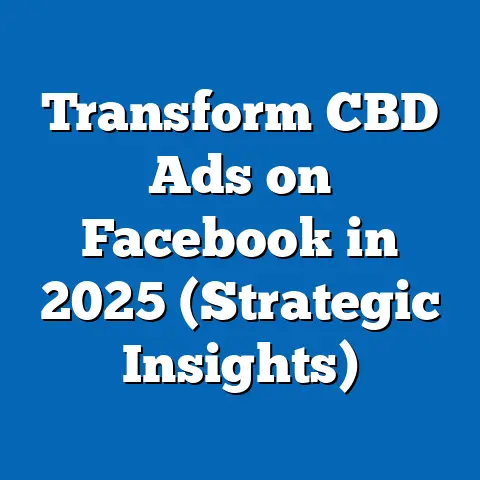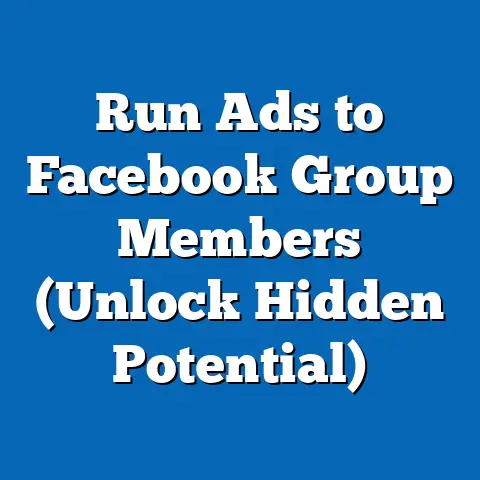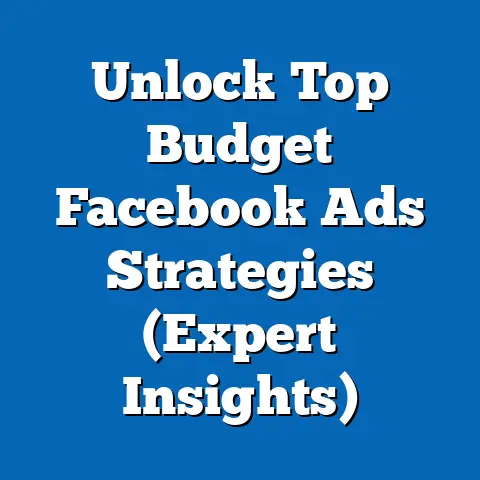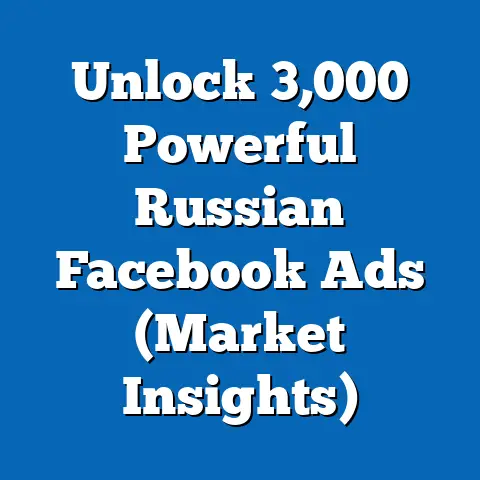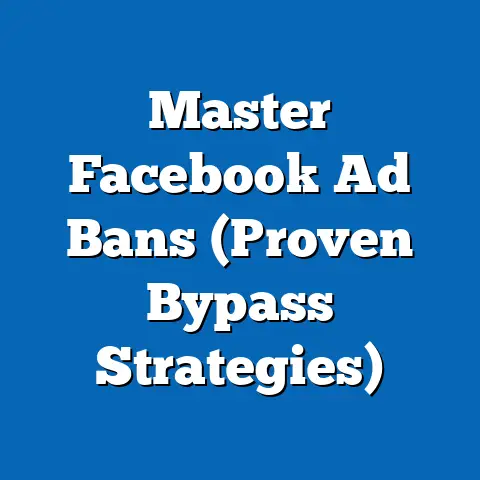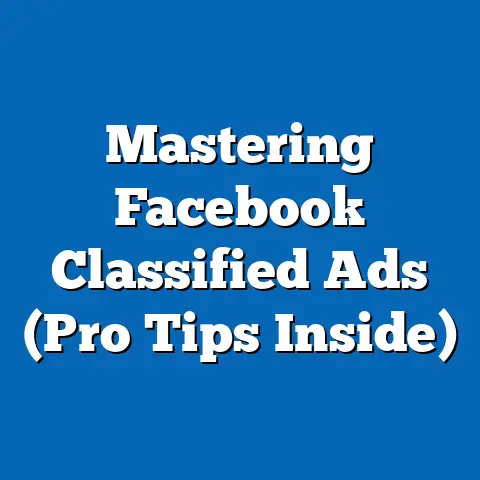Master Facebook Ads Without Distractions (Ultimate Guide)
The digital marketing landscape is a constantly evolving beast, and right now, Facebook advertising is one of its most powerful tools. But let’s be honest, navigating the world of Facebook ads can feel like trying to assemble IKEA furniture after a double espresso – overwhelming and full of distractions. Add to that the rising tide of eco-consciousness, and you’ve got a whole new layer of complexity.
I’ve been in the digital marketing trenches for over a decade, and I’ve seen firsthand how easy it is to get bogged down in the noise. I remember one campaign in particular, launching a line of sustainable bamboo toothbrushes. I was so focused on the technical aspects of ad creation – pixel placement, audience segmentation, bidding strategies – that I almost forgot the core message: sustainability. I was so distracted that I almost missed that the ad was performing poorly.
In this guide, I’m going to share my hard-earned wisdom on mastering Facebook ads efficiently, mindfully, and with a strong focus on eco-consciousness. We’ll tackle the basics, explore advanced strategies, and, most importantly, learn how to create a distraction-free environment that fosters creativity and delivers results.
Why Eco-Consciousness Matters in Facebook Ads
Before we dive into the nitty-gritty, let’s address the elephant in the (sustainable) room: why should you care about eco-consciousness when running Facebook ads?
- Consumer Demand is Shifting: People are waking up. They’re demanding transparency, sustainability, and ethical practices from the brands they support. A recent study by Nielsen found that 73% of global consumers are willing to change their consumption habits to reduce their environmental impact. If you’re not aligning your brand with these values, you’re missing out on a massive opportunity.
- Authenticity Builds Trust: In a world saturated with marketing messages, authenticity is your superpower. Eco-conscious marketing isn’t just about slapping a “green” label on your product; it’s about genuinely integrating sustainability into your brand’s DNA. Consumers can sniff out inauthenticity a mile away.
- It’s Good for the Planet: Let’s be real, we all have a responsibility to protect our planet. By promoting eco-friendly products and services, you’re contributing to a more sustainable future.
This guide isn’t just about making your Facebook ads more effective; it’s about making them more meaningful.
Understanding Facebook Ads
Facebook ads are paid messages that businesses use to reach a specific audience on Facebook and its related platforms, including Instagram, Messenger, and the Audience Network. They’re a powerful tool for driving brand awareness, generating leads, increasing website traffic, and boosting sales.
I’ve seen businesses of all sizes achieve incredible results with Facebook ads, from small local shops to multinational corporations. The key is understanding how to leverage the platform’s targeting capabilities and create compelling ad content that resonates with your audience.
Types of Facebook Ads
Facebook offers a variety of ad formats, each with its own strengths and weaknesses. Here’s a quick overview:
- Image Ads: Simple and effective, image ads are a great way to showcase your product or service with a visually appealing image.
- Video Ads: Video ads are incredibly engaging and can be used to tell a story, demonstrate a product, or share a customer testimonial.
- Carousel Ads: Carousel ads allow you to display multiple images or videos in a single ad, making them ideal for showcasing a range of products or features.
- Collection Ads: Collection ads are designed for e-commerce businesses and allow users to browse and purchase products directly from the ad.
- Lead Ads: Lead ads make it easy for users to sign up for your email list or request more information without leaving Facebook.
- Instant Experience Ads: Instant Experience ads (formerly Canvas ads) provide a full-screen, immersive experience that can be used to tell a story, showcase a product, or drive engagement.
Choosing the right ad format depends on your goals, your target audience, and your budget. For eco-conscious brands, I often recommend video ads to share your sustainability story or carousel ads to showcase a range of eco-friendly products.
The Power of Facebook Targeting
Facebook’s targeting capabilities are what truly set it apart from other advertising platforms. You can target users based on a wide range of factors, including:
- Demographics: Age, gender, location, education, job title, etc.
- Interests: Hobbies, passions, pages they like, etc.
- Behaviors: Purchase history, device usage, travel habits, etc.
- Connections: People who like your page, friends of people who like your page, etc.
- Custom Audiences: You can upload your own customer list or create a custom audience based on website visitors or app users.
- Lookalike Audiences: Facebook can create a lookalike audience based on your existing customers or website visitors, allowing you to reach new people who are likely to be interested in your products or services.
For eco-conscious brands, this level of targeting is invaluable. You can target users who are interested in sustainable living, environmental activism, organic food, or other related topics. You can also target users who have purchased eco-friendly products in the past or who have visited websites related to sustainability.
Example: Let’s say you sell reusable water bottles made from recycled materials. You could target users who are interested in:
- “Sustainable living”
- “Environmentalism”
- “Zero waste”
- “Reusable water bottles”
- “Hydration”
You could also target users who have visited websites like:
- “The Environmental Defense Fund”
- “The Sierra Club”
- “Treehugger”
By combining these targeting options, you can reach a highly engaged audience that is genuinely interested in your product.
Facebook Ad Engagement Statistics
To understand the potential of Facebook ads, let’s look at some key engagement statistics:
- Daily Active Users: Facebook has over 2 billion daily active users, making it the largest social media platform in the world.
- Ad Reach: Facebook ads can reach over 2 billion people worldwide.
- Average Click-Through Rate (CTR): The average CTR for Facebook ads across all industries is around 0.9%. However, CTR can vary significantly depending on the industry, the ad format, and the targeting options used.
- Cost-Per-Click (CPC): The average CPC for Facebook ads is around \$0.38. However, CPC can also vary significantly depending on the industry, the ad format, and the targeting options used.
- Conversion Rate: The average conversion rate for Facebook ads is around 9.21%.
These statistics highlight the immense potential of Facebook ads for reaching a large audience and driving conversions. However, it’s important to remember that these are just averages. Your actual results will depend on a variety of factors, including the quality of your ad content, the effectiveness of your targeting, and the overall competitiveness of your industry.
Takeaway: Facebook ads are a powerful tool for reaching a large audience and driving conversions. By understanding the different ad formats, leveraging the platform’s targeting capabilities, and creating compelling ad content, you can achieve significant results.
The Importance of Eco-Conscious Marketing
Eco-conscious marketing, also known as green marketing or sustainable marketing, is the practice of promoting products and services in a way that minimizes environmental impact and promotes social responsibility. It’s about more than just selling eco-friendly products; it’s about integrating sustainability into every aspect of your business, from sourcing materials to packaging to advertising.
I’ve seen firsthand how eco-conscious marketing can resonate with consumers and build brand loyalty. People want to support businesses that share their values and are committed to making a positive impact on the world.
Growing Consumer Demand for Sustainability
Consumers are increasingly concerned about the environment and are actively seeking out sustainable products and services. Studies consistently show that a significant portion of consumers are willing to pay more for eco-friendly options.
- Global Trends: According to a report by Deloitte, climate change is now a top concern for consumers worldwide.
- Millennials and Gen Z: Younger generations are particularly passionate about sustainability and are more likely to support brands that align with their values.
- Purchase Decisions: A survey by McKinsey found that over 60% of consumers consider sustainability when making a purchase decision.
This growing consumer demand for sustainability presents a significant opportunity for businesses that are willing to embrace eco-conscious marketing.
Case Studies of Successful Eco-Conscious Brands
Let’s take a look at some examples of brands that have successfully integrated eco-consciousness into their marketing strategies:
- Using sustainable materials and manufacturing processes.
- Promoting fair labor practices.
- Donating to environmental causes.
- Being transparent about their sustainability efforts.
- Communicating their values to their target audience.
The Impact of Facebook Ads on Promoting Eco-Friendly Products
Facebook ads can be a powerful tool for promoting eco-friendly products and services to a targeted audience. By leveraging the platform’s targeting capabilities, you can reach consumers who are interested in sustainability and are actively seeking out eco-friendly options.
Here are some tips for using Facebook ads to promote eco-friendly products:
- Highlight the sustainability benefits of your product. Use compelling ad copy and visuals to showcase the environmental benefits of your product, such as reduced carbon footprint, recycled materials, or sustainable packaging.
- Target users who are interested in sustainability. Use Facebook’s targeting options to reach users who are interested in sustainable living, environmental activism, organic food, or other related topics.
- Share your brand’s sustainability story. Use video ads to tell your brand’s story and communicate your commitment to sustainability.
- Use user-generated content. Encourage customers to share their experiences with your eco-friendly products and feature their testimonials in your ads.
- Promote discounts and incentives for eco-friendly purchases. Offer discounts or incentives for customers who purchase eco-friendly products or participate in your sustainability initiatives.
Takeaway: Eco-conscious marketing is not just a trend; it’s a fundamental shift in consumer behavior. By integrating sustainability into your business and leveraging Facebook ads to reach a targeted audience, you can build brand loyalty, drive sales, and contribute to a more sustainable future.
Identifying and Eliminating Distractions
In today’s hyper-connected world, distractions are everywhere. From social media notifications to email alerts to chatty colleagues, it’s easy to get pulled away from the task at hand. And when you’re trying to create effective Facebook ads, distractions can be particularly detrimental.
I’ve definitely been there. I remember one time, I was working on a crucial ad campaign for a client, and I kept getting interrupted by emails, phone calls, and social media notifications. By the end of the day, I had barely made any progress, and I felt completely drained.
Here are some common distractions that marketers face when creating Facebook ads:
- Social Media Notifications: The constant barrage of notifications from Facebook, Instagram, Twitter, and other social media platforms can be incredibly distracting.
- Email Alerts: Email alerts can interrupt your flow and pull you away from the task at hand.
- Phone Calls: Phone calls can be particularly disruptive, especially if they’re unexpected or require a lot of attention.
- Chatty Colleagues: Chatty colleagues can be a major source of distraction, especially if you’re working in an open office environment.
- Multitasking: Multitasking is a myth. Studies have shown that multitasking actually reduces productivity and increases errors.
- Lack of Focus: Sometimes, the biggest distraction is simply a lack of focus. If you’re not clear about your goals or you’re feeling overwhelmed, it’s easy to get distracted.
Strategies for Creating a Distraction-Free Environment
Here are some strategies for creating a distraction-free environment that fosters creativity and delivers results:
- Time-Blocking: Schedule specific blocks of time for working on Facebook ads and stick to your schedule.
- Turn Off Notifications: Turn off all social media notifications, email alerts, and other notifications that could interrupt your flow.
- Use a Website Blocker: Use a website blocker to block distracting websites like Facebook, Instagram, and Twitter during your work hours.
- Find a Quiet Workspace: Find a quiet workspace where you won’t be interrupted by colleagues or other distractions.
- Use Noise-Canceling Headphones: Use noise-canceling headphones to block out distracting sounds.
- Practice Mindfulness: Practice mindfulness techniques like meditation or deep breathing to improve your focus and concentration.
- Take Breaks: Take regular breaks to rest your mind and avoid burnout.
- Communicate Your Needs: Let your colleagues know when you need to focus and ask them not to interrupt you unless it’s urgent.
- Use Productivity Tools: Use productivity tools like project management software or task management apps to stay organized and on track.
The Importance of Focus and Mindfulness
Focus and mindfulness are essential for creating effective Facebook ads. When you’re fully present and focused on the task at hand, you’re more likely to come up with creative ideas, write compelling ad copy, and make informed decisions.
Mindfulness is the practice of paying attention to the present moment without judgment. It can help you to:
- Reduce stress and anxiety.
- Improve focus and concentration.
- Increase creativity.
- Enhance decision-making.
You can practice mindfulness by:
- Meditating.
- Practicing deep breathing.
- Paying attention to your senses.
- Being present in the moment.
Digital Minimalism and Facebook Advertising
Digital minimalism is a philosophy that encourages you to be more intentional about the technology you use and to eliminate distractions from your digital life. It can be particularly helpful for marketers who are struggling to stay focused on Facebook advertising.
Here are some tips for applying digital minimalism to Facebook advertising:
- Limit your time on social media.
- Turn off notifications.
- Unsubscribe from unnecessary email lists.
- Use a website blocker.
- Be intentional about the technology you use.
- Focus on quality over quantity.
By embracing digital minimalism, you can create a more focused and productive environment for creating Facebook ads.
Takeaway: Distractions can be a major obstacle to creating effective Facebook ads. By identifying and eliminating distractions, practicing focus and mindfulness, and embracing digital minimalism, you can create a more productive and creative environment for your work.
Crafting Your Facebook Ad Strategy
Creating a successful Facebook ad campaign requires more than just throwing together some ad copy and visuals. It requires a well-defined strategy that is tailored to your specific goals, your target audience, and your budget.
I’ve seen countless businesses waste money on Facebook ads because they didn’t have a clear strategy in place. They simply created some ads and hoped for the best. That’s not a recipe for success.
Here’s a step-by-step guide on how to develop a Facebook ad strategy tailored to eco-conscious marketing:
1. Define Your Objectives:
What do you want to achieve with your Facebook ads? Do you want to:
- Increase brand awareness?
- Generate leads?
- Drive website traffic?
- Boost sales?
- Promote a specific product or service?
Your objectives should be specific, measurable, achievable, relevant, and time-bound (SMART).
Example: “Increase website traffic by 20% in the next quarter by promoting our new line of eco-friendly clothing.”
2. Identify Your Target Audience:
Who are you trying to reach with your Facebook ads? Consider their:
- Demographics: Age, gender, location, education, job title, etc.
- Interests: Hobbies, passions, pages they like, etc.
- Behaviors: Purchase history, device usage, travel habits, etc.
- Values: What’s important to them? Are they passionate about sustainability, environmentalism, or social justice?
Create detailed buyer personas to help you understand your target audience and their needs.
Example: “Our target audience is millennials and Gen Z who are interested in sustainable fashion, ethical consumption, and environmental activism. They are active on social media, particularly Instagram and TikTok, and they are willing to pay more for eco-friendly products.”
3. Research Your Competitors:
What are your competitors doing on Facebook? Analyze their ads, their targeting strategies, and their overall marketing approach. What are they doing well? What could they be doing better?
Use tools like Facebook Ad Library to see what ads your competitors are running.
4. Develop Your Ad Creative:
Create compelling ad copy and visuals that resonate with your target audience and communicate your brand’s sustainability message.
- Use high-quality images and videos.
- Write clear and concise ad copy.
- Highlight the sustainability benefits of your product or service.
- Include a strong call to action.
- Test different ad variations to see what works best.
5. Choose Your Ad Format:
Select the ad format that is most appropriate for your objectives and your target audience.
- Image Ads: Great for showcasing your product or service with a visually appealing image.
- Video Ads: Ideal for telling your brand’s story and communicating your commitment to sustainability.
- Carousel Ads: Perfect for showcasing a range of eco-friendly products or features.
- Collection Ads: Designed for e-commerce businesses and allow users to browse and purchase products directly from the ad.
- Lead Ads: Make it easy for users to sign up for your email list or request more information.
- Instant Experience Ads: Provide a full-screen, immersive experience that can be used to tell a story, showcase a product, or drive engagement.
6. Set Your Budget and Bidding Strategy:
Determine how much you’re willing to spend on your Facebook ads and choose a bidding strategy that aligns with your objectives.
- Daily Budget: The average amount you’re willing to spend on your ads each day.
- Lifetime Budget: The total amount you’re willing to spend on your ads over a specific period of time.
- Bidding Strategy: How you’ll bid for ad placements. Options include:
- Automatic Bidding: Facebook automatically sets your bids to get the most results for your budget.
- Manual Bidding: You set your bids manually.
- Automatic Bidding: Facebook automatically sets your bids to get the most results for your budget.
- Manual Bidding: You set your bids manually.
7. Define Your Key Performance Indicators (KPIs):
What metrics will you use to measure the success of your Facebook ad campaigns?
- Reach: The number of people who saw your ads.
- Impressions: The number of times your ads were displayed.
- Click-Through Rate (CTR): The percentage of people who clicked on your ads.
- Cost-Per-Click (CPC): The average cost you paid for each click on your ads.
- Conversion Rate: The percentage of people who completed a desired action, such as making a purchase or signing up for your email list.
- Return on Ad Spend (ROAS): The amount of revenue you generated for every dollar you spent on ads.
8. Implement A/B Testing:
A/B testing is the process of comparing two versions of an ad to see which one performs better. Test different ad copy, visuals, targeting options, and bidding strategies to optimize your campaigns for maximum results.
9. Monitor and Optimize Your Campaigns:
Regularly monitor the performance of your Facebook ad campaigns and make adjustments as needed. Analyze your data to identify what’s working and what’s not, and then optimize your campaigns accordingly.
10. Stay Up-to-Date:
Facebook is constantly evolving, so it’s important to stay up-to-date on the latest changes and best practices. Follow industry blogs, attend webinars, and experiment with new features to stay ahead of the curve.
Takeaway: Crafting a Facebook ad strategy tailored to eco-conscious marketing requires careful planning, research, and execution. By defining your objectives, identifying your target audience, developing compelling ad creative, and monitoring your campaigns, you can achieve significant results.
Creating Engaging Ad Content
Engaging ad content is the heart of any successful Facebook ad campaign. It’s what captures attention, communicates your message, and drives action. For eco-conscious brands, creating engaging ad content is particularly important because you need to connect with your audience on an emotional level and communicate your commitment to sustainability.
I’ve seen ads that are technically perfect – great targeting, optimized bidding – but they fall flat because the content is boring or irrelevant. Don’t let that happen to you!
Here are some elements of engaging ad content that captures attention while promoting eco-conscious values:
- Authenticity: Be genuine and transparent about your brand’s sustainability efforts.
- Storytelling: Tell your brand’s story and communicate your values in a compelling way.
- Visual Appeal: Use high-quality images and videos that are visually appealing and relevant to your message.
- Emotional Connection: Connect with your audience on an emotional level by highlighting the positive impact of your product or service.
- Value Proposition: Clearly communicate the value proposition of your product or service and explain how it benefits the environment.
- Social Proof: Use testimonials, reviews, and user-generated content to build trust and credibility.
- Call to Action: Include a clear and compelling call to action that tells users what you want them to do.
Tips on Writing Persuasive Ad Copy
Writing persuasive ad copy is an art and a science. Here are some tips for writing ad copy that conveys your brand’s sustainability message effectively:
- Focus on the benefits, not just the features. Explain how your product or service benefits the environment and the consumer.
- Use strong verbs and active voice. This makes your ad copy more engaging and persuasive.
- Highlight the unique selling proposition (USP) of your product or service. What makes your product or service different from the competition?
- Use persuasive language and emotional appeals. Connect with your audience on an emotional level by highlighting the positive impact of your product or service.
- Keep it short and sweet. People have short attention spans, so get to the point quickly.
- Use a clear and compelling call to action. Tell users what you want them to do.
- Test different ad copy variations to see what works best.
Example:
Bad Ad Copy: “Our reusable water bottles are made from recycled materials.”
Good Ad Copy: “Stay hydrated and help save the planet with our reusable water bottles made from recycled materials. Each bottle helps reduce plastic waste and supports our mission to protect our oceans.”
The Power of Visuals
Visuals are an essential part of any Facebook ad campaign. They’re what capture attention and communicate your message in a visually appealing way.
Here are some tips for using visuals effectively in your Facebook ads:
- Use high-quality images and videos.
- Choose visuals that are relevant to your message.
- Use visuals that are visually appealing and engaging.
- Use visuals that tell a story.
- Use visuals that showcase the sustainability benefits of your product or service.
- Test different visual variations to see what works best.
For eco-conscious brands, it’s particularly important to use visuals that showcase the beauty of nature and the positive impact of your product or service.
Example:
- Image Ads: Use images of your product in a natural setting, such as a forest, a beach, or a mountain.
- Video Ads: Create videos that tell your brand’s story and showcase your commitment to sustainability.
User-Generated Content and Testimonials
User-generated content (UGC) and testimonials are powerful tools for building trust and credibility with your audience. They show that real people are using and enjoying your products or services.
Here are some tips for incorporating UGC and testimonials into your Facebook ads:
- Encourage customers to share their experiences with your product or service.
- Feature customer testimonials in your ads.
- Run contests and giveaways to encourage UGC.
- Use UGC and testimonials to showcase the sustainability benefits of your product or service.
Example:
- Feature a customer testimonial in your ad: “I love my reusable water bottle from [Your Brand]! It’s helped me reduce my plastic waste and stay hydrated all day long.”
- Share a customer’s photo of them using your product in a natural setting: “Check out this beautiful photo of one of our customers using our reusable water bottle on a hike in the mountains!”
Takeaway: Creating engaging ad content is essential for capturing attention, communicating your message, and driving action. By being authentic, telling your story, using high-quality visuals, and incorporating UGC and testimonials, you can create Facebook ads that resonate with your audience and promote your brand’s sustainability message effectively.
Analyzing and Optimizing Your Campaigns
Data analysis is the backbone of any successful Facebook ad campaign. It’s what allows you to understand what’s working, what’s not, and how to improve your results. I’ve seen so many businesses launch ad campaigns and then just let them run without ever looking at the data. That’s a huge mistake!
I remember helping a local organic farm with their Facebook ads. They were running ads, but they didn’t know which ads were performing well or which audiences were the most responsive. After analyzing their data, we discovered that their video ads were performing much better than their image ads, and that their target audience of young families was more responsive than their target audience of retirees. We then adjusted their ad strategy accordingly, and their sales increased by 30% in the following month.
Here’s how to analyze and optimize your Facebook ad campaigns:
Tools and Metrics to Track
Facebook provides a wealth of data about your ad campaigns. Here are some of the most important tools and metrics to track:
- Facebook Ads Manager: This is your central hub for managing your Facebook ad campaigns. It provides detailed data about your ad performance, including reach, impressions, click-through rate, cost-per-click, conversion rate, and return on ad spend.
- Facebook Pixel: The Facebook Pixel is a snippet of code that you install on your website. It allows you to track conversions, optimize your ads, and build custom audiences.
- Google Analytics: Google Analytics is a web analytics service that allows you to track website traffic, user behavior, and conversions.
- Reach: The number of people who saw your ads.
- Impressions: The number of times your ads were displayed.
- Click-Through Rate (CTR): The percentage of people who clicked on your ads.
- Cost-Per-Click (CPC): The average cost you paid for each click on your ads.
- Conversion Rate: The percentage of people who completed a desired action, such as making a purchase or signing up for your email list.
- Return on Ad Spend (ROAS): The amount of revenue you generated for every dollar you spent on ads.
Interpreting the Data
Once you have the data, you need to interpret it to understand what’s working and what’s not. Here are some key questions to ask yourself:
- Which ads are performing the best?
- Which audiences are the most responsive?
- Which ad formats are the most effective?
- What’s your cost-per-click?
- What’s your conversion rate?
- What’s your return on ad spend?
Look for patterns and trends in your data to identify areas for improvement.
Example:
- If your CTR is low, try improving your ad copy or visuals.
- If your CPC is high, try targeting a different audience.
- If your conversion rate is low, try optimizing your landing page.
- If your ROAS is low, try adjusting your bidding strategy.
Optimizing Your Ads
Based on your data analysis, you can optimize your Facebook ad campaigns to improve their performance. Here are some common optimization techniques:
- Adjust Your Targeting: Refine your targeting options to reach a more responsive audience.
- Improve Your Ad Copy: Rewrite your ad copy to make it more persuasive and engaging.
- Update Your Visuals: Use new images or videos that are more visually appealing.
- Change Your Ad Format: Experiment with different ad formats to see which ones perform best.
- Adjust Your Bidding Strategy: Adjust your bidding strategy to optimize your cost-per-click and conversion rate.
- A/B Test Everything: Continuously test different ad variations to see what works best.
Maintaining an Eco-Conscious Approach
When analyzing and optimizing your Facebook ad campaigns, it’s important to maintain an eco-conscious approach. This means:
- Using sustainable ad creative.
- Targeting audiences who are interested in sustainability.
- Promoting eco-friendly products and services.
- Being transparent about your brand’s sustainability efforts.
- Measuring the environmental impact of your ad campaigns.
For example, you can use tools like carbon calculators to estimate the carbon footprint of your ad campaigns and then take steps to reduce your impact.
Takeaway: Data analysis is essential for optimizing your Facebook ad campaigns and achieving your goals. By tracking the right metrics, interpreting the data, and implementing optimization techniques, you can improve the performance of your ads and drive more conversions. And by maintaining an eco-conscious approach, you can ensure that your ad campaigns are both effective and sustainable.
Conclusion
We’ve covered a lot of ground in this ultimate guide to mastering Facebook ads without distractions. From understanding the basics of Facebook advertising to crafting a winning eco-conscious strategy, eliminating distractions, creating engaging content, and analyzing your results, you now have the tools you need to succeed.
The Significance of Mindful and Eco-Conscious Facebook Ads
Remember, mastering Facebook ads isn’t just about generating leads or driving sales; it’s about building a brand that resonates with your audience and makes a positive impact on the world. In today’s increasingly eco-conscious marketplace, consumers are demanding more than just great products and services. They want to support businesses that share their values and are committed to sustainability.
By integrating eco-consciousness into your Facebook ad strategy, you can:
- Build brand loyalty.
- Attract new customers.
- Increase sales.
- Make a positive impact on the planet.
And by creating a distraction-free environment, you can:
- Improve your focus and concentration.
- Increase your creativity.
- Enhance your decision-making.
- Reduce stress and anxiety.
Taking Action
Now it’s time to put what you’ve learned into practice. Here are some actionable steps you can take today:
- Define your objectives and identify your target audience.
- Develop a Facebook ad strategy tailored to eco-conscious marketing.
- Create compelling ad copy and visuals that communicate your brand’s sustainability message.
- Eliminate distractions from your work environment.
- Track your ad performance and make adjustments as needed.
- Continuously test and optimize your campaigns.
- Stay up-to-date on the latest Facebook ad features and best practices.
The Potential Impact of Eco-Conscious Advertising
The potential impact of eco-conscious advertising is enormous. By promoting sustainable products and services, we can:
- Reduce our carbon footprint.
- Conserve natural resources.
- Protect our oceans and forests.
- Improve public health.
- Create a more sustainable future for all.
I believe that we all have a responsibility to use our marketing power for good. By embracing eco-consciousness in our Facebook ad campaigns, we can not only achieve our business goals but also contribute to a more sustainable and equitable world.
So go forth and create Facebook ads that are not only effective but also meaningful. Let’s use our voices to promote sustainability, inspire change, and build a better future for generations to come.

